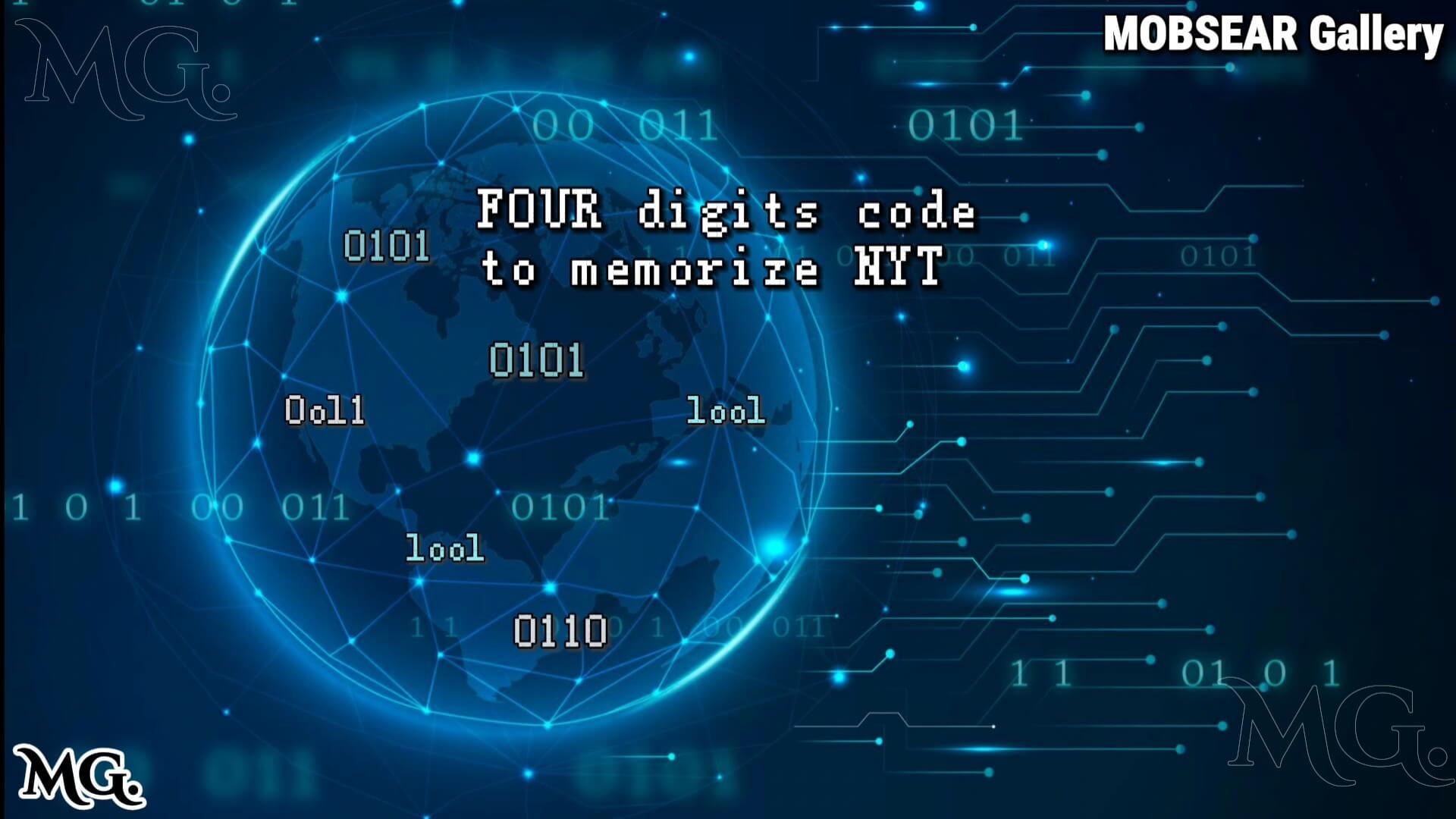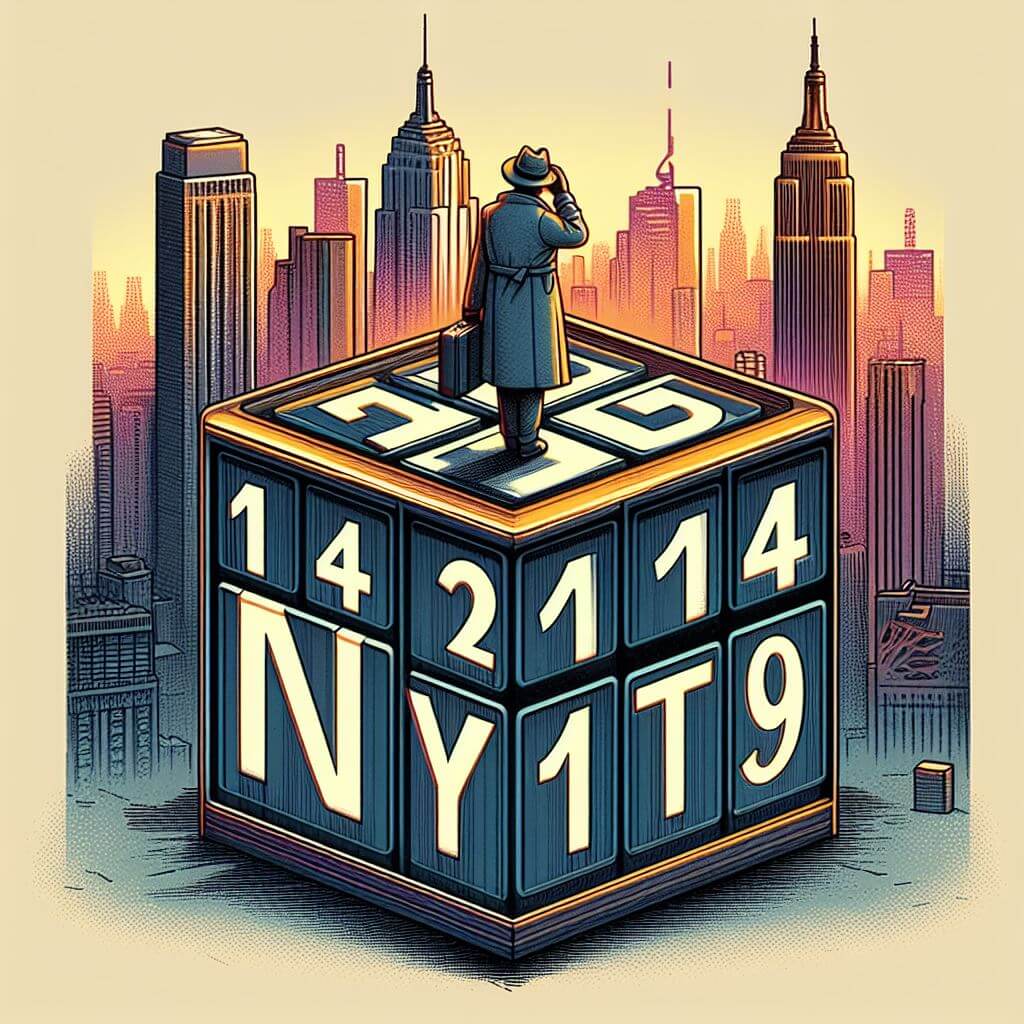Ah, the New York Times crossword puzzle – a daily brain teaser beloved by millions. But sometimes, even the most seasoned solvers get stumped. One particularly notorious clue is the dreaded “four digits to memorizing nyt.” It pops up every now and then, leaving crossword enthusiasts scratching their heads.
Fear not, fellow puzzlers! This guide delves into the secrets behind this cryptic clue, equipping you to tackle it with confidence. We’ll explore various approaches, common pitfalls to avoid, and some bonus tips to elevate your crossword game.
But before have you ever heard upon the phrase “four digits to memorize NYT” while browsing the web or diving deep into the New York Times (NYT) world? Fear not, curious reader, for you’re not alone! This cryptic message has sparked a wave of online curiosity, leaving many wondering what it means and if there’s a hidden treasure waiting to be unlocked.
The Quest Begins: Unpacking the Clues
First things first, let’s dissect the phrase itself:
- Four Digits: This suggests a numerical code, potentially a PIN, password, or access key.
- Memorize: This implies the code needs to be committed to memory, not readily available online.
- NYT: This, of course, refers to the prestigious New York Times.
So, what could this code unlock within the NYT universe? Here are some intriguing possibilities:
- Exclusive Content: Maybe the code grants access to a hidden section of the NYT website with premium content, archival materials, or in-depth investigative reports.
- Interactive Features: Perhaps it unlocks interactive features within NYT articles. And allowing readers to participate in polls, data visualizations, or personalized experiences.
- Special Events: Could it be a registration code for a special event hosted by the NYT, like exclusive author Q&A sessions or behind-the-scenes tours of their headquarters?
Why is “Four Digits to Memorize” So Tricky?
The main challenge lies in the clue’s ambiguity. Unlike a straightforward definition, it offers no concrete hint about the meaning of the four digits. It could refer to a year, a historical event, an area code, a product code – the possibilities seem endless.
Furthermore, crosswords often rely on wordplay and misdirection. “Memorize” could be a literal instruction, or it could be a clever way to lead you astray.
Strategies to Slay the “Four Digits” Clue
Here are some battle tactics to employ when you encounter this cryptic foe:
- Cross-Reference Magic: The beauty of crosswords lies in their interconnectedness. Look at the intersecting clues around the four-digit answer. Are there any thematic links or recurring patterns? For example, if the answer intersects with a clue about a historical figure, the digits could be their birth year.
- Letter Play Power: Analyze the letters already filled in the answer grid. Are there any patterns that suggest a specific format? Maybe the first two digits are repeated, or the digits add up to a specific number.
- Think Outside the Box: Don’t get bogged down in literal interpretations. “Memorize” could be a playful hint towards a famous phone number, a song title with numerical references, or even a secret agent code (if the crossword theme leans towards espionage).
The Plot Thickens: Where Does This Phrase Emerge?
Unfortunately, there isn’t one definitive answer to this question. “Four digits to memorize NYT” seems to have become a catchphrase used by various sources referencing the New York Times. Here are some possibilities:
- Internal Use at NYT: It could be an internal code used by NYT employees for a specific purpose, like accessing a restricted section of their content management system (CMS) or a proprietary database.
- Promotional Campaign Relic: Perhaps it’s a remnant of a past promotional campaign where the NYT offered a four-digit code for a limited-time benefit, like a free trial or access to exclusive content.
- Misinterpretation: There’s a chance it could be a misinterpretation of something else entirely. Maybe someone saw a phone number or access code partially obscured and mistook it for a four-digit NYT code.
Theory 1: Internal NYT Reference
The most straightforward interpretation lies within the New York Times (NYT) itself. The “four digits” could potentially be an internal reference code used by the NYT for various purposes. Here are some possibilities:
- Employee Access Code: Large organizations like the NYT often use access codes for internal systems or resources. These codes could grant employees access to specific databases, applications, or even physical locations within the building.
- Departmental Identification: Maybe the four digits represent an internal code used to identify specific departments within the NYT. This could be helpful for routing tasks, communication, or data management amongst different teams.
- Content Management System: The NYT likely utilizes a complex Content Management System (CMS) to publish and manage their online content. It’s possible that the four digits could be a unique identifier for specific articles, sections, or multimedia elements within the CMS.
Challenges with the Internal Reference Theory
While the internal reference theory holds some weight, it also faces some challenges:
- Limited Scope: Unless you work for the NYT, memorizing these internal codes likely wouldn’t be very helpful. Their purpose wouldn’t extend beyond the organization’s internal operations.
- Confidentiality: Internal access codes are usually confidential information. Sharing them publicly wouldn’t be standard practice for the NYT.
Theory 2: Educational Reference (Unlikely)
There’s a very small chance that “four digits to memorize NYT” could refer to some obscure historical reference or educational resource associated with the New York Times. Here’s what this scenario might entail:
- Historical Significance: Maybe the four digits represent a specific date or event mentioned in a historical NYT article with educational value. However, without further context, pinpointing the exact event would be quite challenging.
- Learning Resource Code: It’s highly unlikely, but the four digits could potentially be a code for accessing a specific learning resource. Or interactive feature on the NYT website, perhaps targeted towards educators or students.
Challenges with the Educational Reference Theory
While intriguing, this theory faces significant hurdles:
- Lack of Evidence: There’s currently no readily available information to support the existence of such an educational resource on the NYT website.
- Specificity: Even if such a resource existed, it wouldn’t be widely known or publicized. Without additional details, figuring out the specific meaning of the four digits would be nearly impossible.
Following the Breadcrumbs: Where to Look
However, there’s no definitive answer yet. The “four digits to memorizing NYT” message appears to be shrouded in a bit of mystery. However, fret not, fellow codebreakers! Here are some tactics to help us on our quest:
- Digging Deep into NYT Resources: Scour the NYT website, social media channels, and even physical publications for any mention of this code. Look for cryptic mentions, hidden messages within articles, or clues from journalists themselves.
- The Power of the Online Community: Websites like Reddit forums dedicated to the NYT and online communities focused on puzzles and mysteries could be valuable resources. Share your findings and collaborate with others who may be on the same quest.
- Think Outside the Box: Consider if the “four digits” might not be a literal code. Perhaps it’s a date, a reference to a specific NYT article page number, or a combination of letters and numbers disguised as digits.
Beyond the Code: Exploring Other Possibilities
While the “four digits” remain a mystery, here are some alternative explanations to consider:
- Marketing Campaign: It’s possible this phrase is part of a viral marketing campaign by the NYT to generate buzz and get readers engaged.
- Internal Reference: Maybe the “four digits” are an internal code used within the NYT for a specific purpose, not intended for public knowledge.
- Misdirection: The entire phrase could be a clever red herring, leading us down a rabbit hole while the real story lies elsewhere.
Embrace the Journey: The Value of the Mystery
Regardless of the ultimate answer, the “four digits to memorizing NYT” situation presents a fascinating example of how the internet thrives on curiosity and the power of collective investigation. It highlights the NYT’s potential for hidden depths and exclusive experiences that can spark a sense of community and shared discovery.
Here are some takeaways from this intriguing puzzle:
- Critical Thinking: This mystery encourages us to think critically, analyze information, and explore different possibilities.
- The Power of Community: The quest for answers demonstrates the strength of online communities where people collaborate to solve puzzles.
- Curiosity is Key: Stepping outside the ordinary and following our curiosity can lead to unexpected discoveries and a deeper appreciation for the complexities of information online.
The Truth is Out There (Probably Not Here):
The internet can be a playground for speculation, and “four digits to memorizing NYT” seems to be a case of that. Given the lack of concrete evidence and the transparency of the NYT’s subscription model. It’s safe to assume there’s no hidden trove of content or exclusive features guarded by a four digits code to memorize nyt crossword answers.
But Wait, There’s More! Maximizing Your NYT Experience
Instead of chasing phantom codes, here are some real ways to unlock the full potential of your New York Times experience:
- Subscription Options: The NYT offers various subscription tiers, from basic digital access to all-access print and digital bundles. Explore and choose the one that best suits your reading needs.
- NYT Apps: Download the NYT app for on-the-go access to the latest news, opinion pieces, and in-depth investigations.
- NYT Newsletters: Sign up for specialized newsletters on topics that pique your interest. From business and politics to science and arts, there’s something for everyone.
- The NYT Crossword Puzzle: Challenge yourself with the iconic NYT crossword puzzle, available in print and online. (No codes required!)
- NYT Cooking: Immerse yourself in the world of culinary delights with the NYT Cooking app and website. Discover delicious recipes, cooking tips, and expert advice from renowned chefs.
The Final Word: The Mystery Continues
Whether the “four digits to memorizing NYT” unlocks a hidden treasure trove of information or simply serves as a thought-provoking puzzle, it leaves us wanting more. It’s a testament to the enduring power of the New York Times. And the joy of the chase when it comes to online mysteries. So, keep your eyes peeled, fellow explorers! The answer might be just around the corner, waiting to be deciphered.
While the “Four Digits to Memorizing NYT” clue can be frustrating, it’s important to remember that it’s just one part of the larger crossword experience. The true joy of the NYT crossword lies in the challenge, the sense of accomplishment when you finally crack a tough clue, and the satisfaction of completing the entire grid.
So, the next time you encounter the dreaded “Four Digits,” don’t despair! Embrace the challenge, utilize the resources available, and most importantly, have fun! Remember, the journey of solving a crossword is just as rewarding as reaching the final solution.



